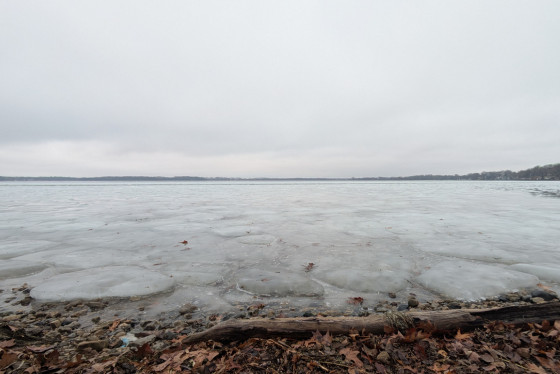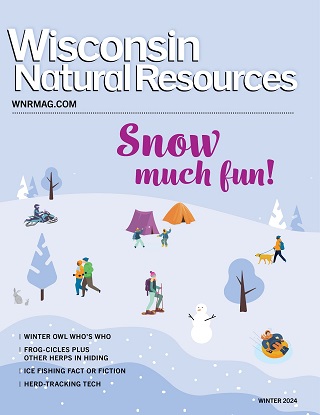Contact: DNR Office of Communications
DNRPress@wisconsin.gov
No Ice Is 100% Safe: Be Careful On Frozen Waterbodies
 Snowfall may cover hazardous ice.
Photo credit: Wisconsin DNR
Snowfall may cover hazardous ice.
Photo credit: Wisconsin DNR
MADISON, Wis. – As snow is predicted over the next week in much of Wisconsin, the Wisconsin Department of Natural Resources (DNR) urges the public to be extra careful when traversing any frozen waterbody.
Ice is still forming, and ice thickness will vary. Ice hazards could be covered by light snowfall.
The DNR does not monitor ice conditions, but they are monitored locally. Local fishing clubs, outfitters and bait shops are the best sources for local current ice conditions.
If your winter outing involves travel over a waterbody, remember that every waterbody has its own characteristics. Check if the lake has inlets, outlets or narrows, is spring-fed or has currents, which can thin the ice.
Some smaller lakes can have aerators that run throughout the winter either covering a large area towards the center of the lake or smaller aerators placed by private property landowners adjacent to their shore and/or piers.
Equally as important is to stay alert for pressure ridges or ice heaves. These can be dangerous due to thin ice and open water and often are created, move or grow with changes in temperatures and high winds. This can happen on Wisconsin’s largest lake – Winnebago, a popular home to sturgeon spearers – and the Bay of Green Bay.
Here are more safety tips:
- Carry a cell phone, and let people know where you are going and when you’ll return home.
- Wear proper clothing and equipment, including a personal flotation device or a float coat to help you stay afloat and to help slow body heat loss.
- Take an extra pair of mittens or gloves so your hands can remain dry and warm.
- Wear creepers attached to boots to prevent slipping on clear ice.
- Carry a spud bar to check the ice while walking to new areas.
- Do not travel in unfamiliar areas – or at night.
- Have a plan in place noting where you will be and when you plan to return. Along with leaving a written note of your plans, it is also recommended to keep a charged cell phone.
If the worst happens and you happen to fall in, here’s what to do:
- Carry a couple of hand-held spikes and a length of light rope in an easily accessible pocket or inside your sleeves to help pull yourself – or others – out of the ice.
- If you fall in, remain as calm as possible and while attempting to assist yourself out of the water, call for help as soon as you can. Anyone who attempts to rescue you also is recommended to use a rope or something similar to avoid falling through as well.
Visit the DNR’s Ice Safety webpage for more information on staying safe on the ice.

